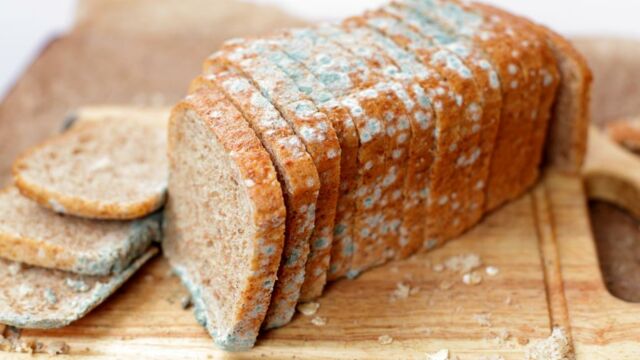Here's what happens if you eat mouldy food

Mould in food is an unavoidable part of life, but should you accidentally consume it, here's what could happen.
When it comes to food, while most of us enjoy eating it, there are a lot of things left to learn when it comes to cooking and storing food. A lot of people are still unaware of seemingly basic things such as how easily tinned food can go bad or even the correct way to microwave food.
Discover our latest podcast
Even serious matters such as how to avoid food poisoning from eating leftover rice remains elusive for people. So it is no wonder that most people are still confused whether eating mouldy food can be excusable or if it is a serious health hazard.
More under this adMore under this adHere's what happens if you accidentally or intentionally eat mould in your food, as per experts at Cleveland Clinic.
Mould can be extremely dangerous
Mould is a fungus which grows on foods like fruit, vegetables, jam etc. given the right conditions for it to thrive. White spots, discolouration on food or bad smell indicate the growth of mould.
As per the report, dietitian Lillian Craggs-Dino, advises people that in most cases eating mouldy food is not very dangerous. They advice,
More under this adMore under this adBe mindful of the fact that you ate it. And make sure you don’t have any symptoms for the rest of that day. Most likely, you’ll be okay.
However, some types of mould can be extremely hazardous to health, causing a variety of symptoms such as nausea, diarrhea or difficulty in breathing. As per the expert, the outcome of eating mould depends on the type of mould it is.
More under this adMore under this ad
The dietician warns that some moulds can be very toxic, and even fatal to human bodies. They explain,
You don’t know what mold you actually might be eating. Some molds can actually be very, very toxic to human beings. They can also cause allergic reactions and respiratory problems.More under this adMore under this ad
Those are extremely dangerous to somebody’s health. They can actually cause death
Read more:
⋙ 3 popular drinks you should always avoid during a heatwave, they will dehydrate you
⋙ Here's why you should avoid sauce dispensers at fast-food restaurants
Can any food be consumed even after getting mould?
These are the foods that should be thrown away as soon as you see the first hint of mould on them:
- Vegetables and fruits, such as cucumbers, tomatoes and peaches
- Deli meats such as ham
- Yogurt
- Jams and jellies
- Restaurant leftovers
- Peanut butter
Moulds on hard cheese or hard vegetables (like carrot, radish etc,) can be salvaged if the mould is scrapped away. You should cut off at least an inch around the contaminated areas.
More under this adMore under this adBut if you have doubts, you should seriously refrain from eating any mouldy food, or even food that has been close to the contaminated food.
This is because bacteria that causes mould can spread very easily, hence even if the adjacent food next to mouldy foods might look good, it is advisable to throw them all away.
More under this adMore under this adRead more:
⋙ Pet owners shocked to find out many common household foods including grapes, are toxic to dogs
Sources used:
Cleveland Clinic: 'What Happens if You Accidentally Eat Moldy Food?'